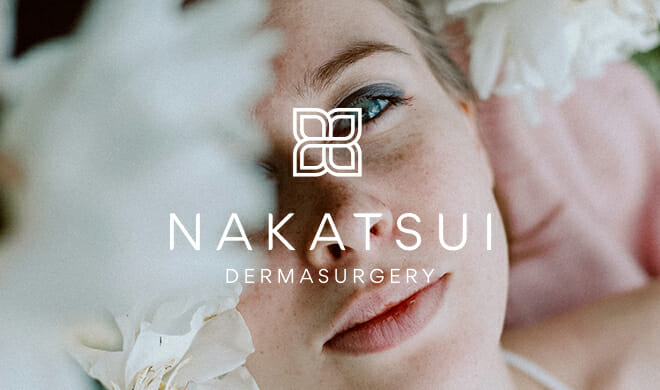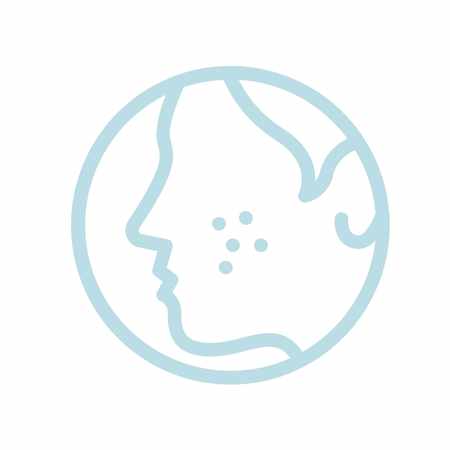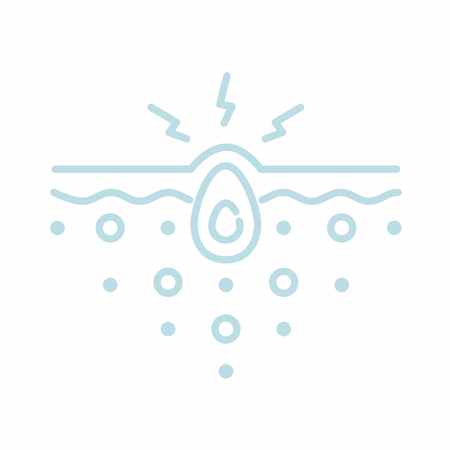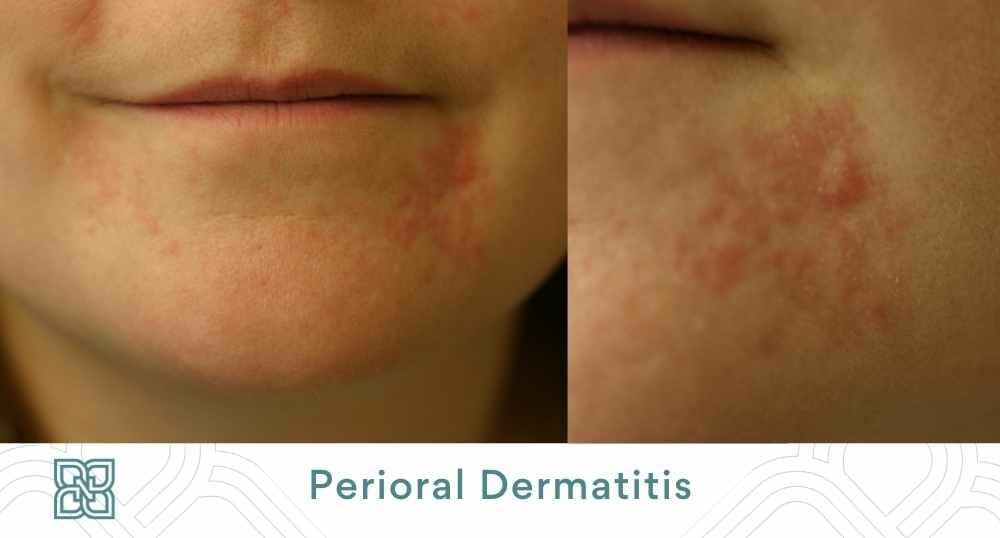Acne


Acne vulgaris is an extremely common condition that affects teenagers, adults, and sometimes even infants (baby acne). Although this condition is most common in teenagers, it can appear in adults as well, especially in women along the jawline.

It is characterized by different types of blemishes like papules, pustules (pimples), comedones (whiteheads and blackheads), and sometimes cysts. It can also occur on the back (back acne or “bacne”) or chest.

Cystic acne is one of the more severe forms as it is the most likely to leave permanent scars. Cystic acne often means that more aggressive treatment like Accutane is warranted and that laser treatment may be needed to address acne scars. Learn more about the different types of acne scar treatments.
Typical areas of involvement are the face (forehead, chin, cheeks, and nose), chest, back, and arms. Although extremely common, even mild cases can be unsightly and can be damaging to one’s self-esteem and emotional well-being. The most troublesome aspect of this condition is the potential for scars to occur, especially with cystic acne, as this can be extremely difficult to treat in some cases. Our dermatologist-led Edmonton acne clinic can address your pimples and blackheads, as well as acne scarring.

What causes acne?
This condition is caused in part by a bacteria called Cutibacterium acnes (previously called Propionibacterium acnes). This bacteria helps to clog pores leading to an accumulation of sebum, which in turn causes inflammation. Other factors such as makeup, stress, heredity, diet, lifestyle, friction, and hormones can also contribute to clogging your pores.

Who gets acne?
- 80% of adolescents
- 25% of adults aged 20-40
- 75% of adult cases are in women (likely because of hormones)
Treatments For Active Acne
How to get rid of acne
Getting rid of acne is not always easy. Treatment can be broken down into internal treatments and external treatments. Internal treatments include medications such as oral antibiotics, birth control pills. and Accutane, while external treatments include topical antibiotics, laser, Morpheus8 RF microneedling, Isolaz, and photodynamic therapy (PDT).
At our dermatoloigst-led Edmonton acne clinic, we first treat patients with active acne using a step-wise approach, depending on severity. If mild, we can start with a topical antibiotic, or a topical retinoid like tretinoin if the patient has comedones (whiteheads and blackheads). Some examples of commonly used topical medications include Tactupump Forte and Biacna. If more severe, we can use oral antibiotics like tetracycline, doxycycline, minocycline, and erythromycin, or birth control in women. Some women will respond to medications that block the testosterone receptor such as spironolactone. Some other popular treatments include chemical peels, HydraFacial MD, blue light, radiofrequency microneedling (Morpheus8), or laser.


If you just have one spot, our doctors can do a spot treatment with a tiny injection of cortisone to clear that spot in many cases. However, care must be taken to avoid injecting too much cortisone to avoid indenting the skin.
If very severe (e.g. cystic acne), we will often use Accutane, Clarus, or a new version called Epuris. Epuris, Clarus, and Accutane are very similar as the active ingredient in all of these is isotretinoin, but Epuris has one major advantage–it can be absorbed without taking it with a fatty meal (which is the ideal way to take Accutane). The problem with Accutane and Epuris is that they have a list of potentially significant side effects, which include birth defects, extreme dryness, elevated cholesterol and triglyceride levels, and depression. Despite theses risks, it is often prescribed for persistent cases and for cystic acne.

Other treatment options for active acne
- Fractora is a fractionated radiofrequency (RF microneedling) treatment that our dermatologist uses to help decrease acne and help treat scars as well. This treatment uses radiofrequency to reduce sebum production.
- Morpheus8 is our newest treatment for acne. It is the new, improved version of Fractora, yielding even better results with less discomfort. It reduces sebum production and kills the causative bacteria. As a side benefit, it also helps with acne scarring.
- Chemical Peels can be used in some patients. The exfoliation caused by the chemical peel would frequently improve the condition although there are some patients whose skin condition worsens as a result of irritation. Discuss this with Dr. Smith or Dr. Nakatsui before proceeding with therapy.
- HydraFacial MD treatments can also help. It simultaneously exfoliates, removes impurities, and rehydrates your skin. We have had a lot of success using this modality.
- Isolaz is a device that uses a combination of suction and light therapy to kill acne bacteria and clear pores. This is not strictly speaking laser treatment as it uses intense pulsed light to treat the skin. This decreases the number of lesions and the amount of sebum produced. We did use this on our patients for awhile and found it effective for some people. Although Isolaz can be effective, we no longer offer this therapy because we were not able to sterilize the tips between use and if we used new tips for every treatment, it made treatments too expensive for the patient.
- PDT is an effective therapy that uses a special wavelength of light to activate a topical medication that is absorbed by acne-causing bacteria to clear the bacteria and treat the acne. One of the downsides of PDT therapy is that it may cause redness and peeling, which could last up to one week following therapy.
- Pulsed dye laser can sometimes be used to treat acne. It works through photochemical effects on Cutibacterium acnes and photomechanical effects on sebaceous glands and microvasculature.
Acne can also leave unsightly scarring. Fortunately, there are many treatments available to treat acne scarring at Nakatsui Dermasurgery (formerly Groot DermaSurgery). Learn more about your scar treatment options here.
Acne Treatments
Morpheus8 HydraFacial MD Photodynamic therapyFrequently Asked Questions
What is Maskne?
Maskne is a colloquial term for the development of acne in areas covered by a mask. This has become very common with face mask precautions during the Covid-19 Coronavirus pandemic. Many people are suffering from pimples developing under the areas covered by their mask.
In some people, this represents a type of acne mechanica where rubbing stimulated the development of pimples. Athletes often see this in areas of rubbing such as with chinstraps. This same process can affect mask wearers. In others, the acne-like outbreak is probably perioral dermatitis bought on by irritation from the mask.
Perioral dermatitis is a condition where blemishes develop as a result of skin irritation. As a result, people with sensitive skin are more likely to develop this. This irritation can cause similar rashes around the nose (perinasal dermatitis) and around the eyes (periorbital dermatitis). Treatment for this involves removing the irritants and may involve the use of oral and topical antibiotics. With maskne and COVID, it will be impossible to eliminate the use of masks but using a mask that is clean and less abrasive will help.

Is Accutane Use for Acne Associated With Inflammatory Bowel Disease?
The potential association between isotretinoin use (such as Accutane, Clarus, or Epuris) for acne and inflammatory bowel disease (IBD) such as ulcerative colitis and Crohn’s disease is controversial. Some studies have suggested there may be an association whereas others have concluded there is no association.
One of the most recent studies was published in 2021 and looked at 27230 patients on isotretinoin and 631089 control patients who were not on isotretinoin. The researchers found the incidence of IBD in patients exposed to isotretinoin was very low and they could not find any evidence of increased risk versus the control population. At this point, the risk of developing IBD from isotretinoin appears to be very low if it there is even a true association at all.
